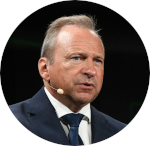
At the Association of the Luxembourg Fund Industry’s private assets conference in Kirchberg, policymakers and asset managers championed private markets as vital for Europe’s growth and as a bridge for retail investors through ELTIFs. Yet speakers also warned that education gaps, transparency issues, and regulatory hurdles could constrain the sector’s ambitions.
Luxembourg’s fund industry manages about 7,400 billion euros in assets, two-thirds in Ucits and one-third in alternatives. But the share of alternatives has “remarkably” tripled since 2018, finance minister Gilles Roth told participants on Tuesday.
 “Last year, among European managed private capital funds, more than half were domiciled in Luxembourg,” Roth said. “Luxembourg-based funds are sold in more than eighty countries.” The grand duchy, he stressed, is not just a local platform but a global one.
“Last year, among European managed private capital funds, more than half were domiciled in Luxembourg,” Roth said. “Luxembourg-based funds are sold in more than eighty countries.” The grand duchy, he stressed, is not just a local platform but a global one.
Amid geopolitical tensions, the climate crisis, and Europe’s competitiveness challenge, Roth argued that private capital has a wider purpose. “Europe needs this capital to renew its industry, accelerate the energy transition, and strengthen security and resilience. Investors need long-term returns with real economic impact, and Luxembourg has the stability, the skills, and the reach to make that happen.”
Diversify risk, optimise returns
For Sophie Védrine-Binninger, partner at Forvis Mazars Luxembourg and moderator of a panel on hybrid portfolios, “the role of private assets in multi-asset strategies has never been more relevant.”
Diversification is the reason, said Eric Deram, chief executive of Flexstone Partners, part of Natixis Investment Managers. “A balanced portfolio of liquid and illiquid assets can substantially improve the risk-return profile. It’s all about diversification of risk and optimisation of returns.”
Research from KKR, he noted, shows that a portfolio of 40 percent equities, 30 percent bonds, and 30 percent alternatives outperformed the classic 60-40 mix by 3 percent annually, while cutting volatility by 24 percent. “That’s very substantial,” he said.
With listed equities shrinking 45 percent over recent decades, Deram added, private assets provide “infinite possibilities” to build differentiated portfolios. “You can fine-tune your portfolio with illiquid assets in a way that is not possible with liquid assets.”
Challenges remain. Accessing information on private assets is difficult, said Alexandra Solnik, head of investor relations–private assets at BNP Paribas AM. Education should be a top priority, even at trustee and CIO level.
The ‘right’ allocation
So what is the right allocation to private markets? There is no single answer. All of Deram’s clients at Flexstone now allocate to private markets, from 2 percent at a “conservative” Swiss pension fund to 40 percent at an Australian fund. The question, he said, is not if private assets will be a core building block of hybrid portfolios. They already are.
The boundaries between public and private assets are blurring, added Georgi Kyosev, executive director at Robeco Institutional Asset Management, with end investors benefiting from “the best of both worlds.” Rather than focusing on liquidity, investors should consider underlying value drivers.
“If your allocation is just a pinch, it may not be worth the cost of entry.”
Alexandra Solnik, BNP Paribas
Still, a minimum threshold is needed, said Solnik. Around 10 percent allows for diversification within private markets. “If your allocation is just a pinch, it may not be worth the cost of entry,” she cautioned. Liquidity needs, risk budgets, fees, and investor patience all matter.
Illiquidity however is not the same as risk, Deram stressed, responding to a question from Investment Officer on whether hybrid portfolios could bring retail investors closer to private markets.
“You should look at illiquidity, and this is how you should communicate with the investor,” he said. “It always frustrates me when people say this is a highly risky asset class. It is not. If you only invest in early-stage venture capital tech, yes, you may lose 80 percent of your capital. But if you do a diversified buyout portfolio, honestly, even the worst fund manager will not lose money,” he concluded with a laugh.
ELTIF: a Luxembourg success story
The European long-term investment fund, or ELTIF, could be the gateway for retail investors. The revised ELTIF 2.0 broadens eligible assets, removes minimum thresholds, and allows more flexible portfolio composition. It could even become the third pillar of Luxembourg’s fund industry alongside Ucits and alternatives like RAIFs, said Kai Nemec, management board member at Union Investment Luxembourg.
As of September, Luxembourg hosted 137 of the 235 ELTIFs registered with the European Securities and Markets Authority, about 60 percent of the market. Both Nemec and Tara Drai, assistant vice president at Blackstone, praised Luxembourg’s regulator CSSF for a smooth and constructive application process.
Union Investment now offers a Luxembourg-domiciled infrastructure ELTIF for retail investors in Germany, Nemec said. “We think that 5 to 10 percent of retail portfolios could be somewhere in the ELTIF environment.”
Momentum is strong: ELTIF registrations rose from 101 in February 2024 to 235 in September. But for growth to last, Nemec argued, bank advisors must be able to sell the product, making education critical.
Barriers remain. National regulators’ gold-plating, cross-border distribution hurdles, and prescriptive restrictions such as limits on US fund investments could hold back expansion.
“To write a real success story, the ELTIF needs to create a positive track record,” Nemec concluded.